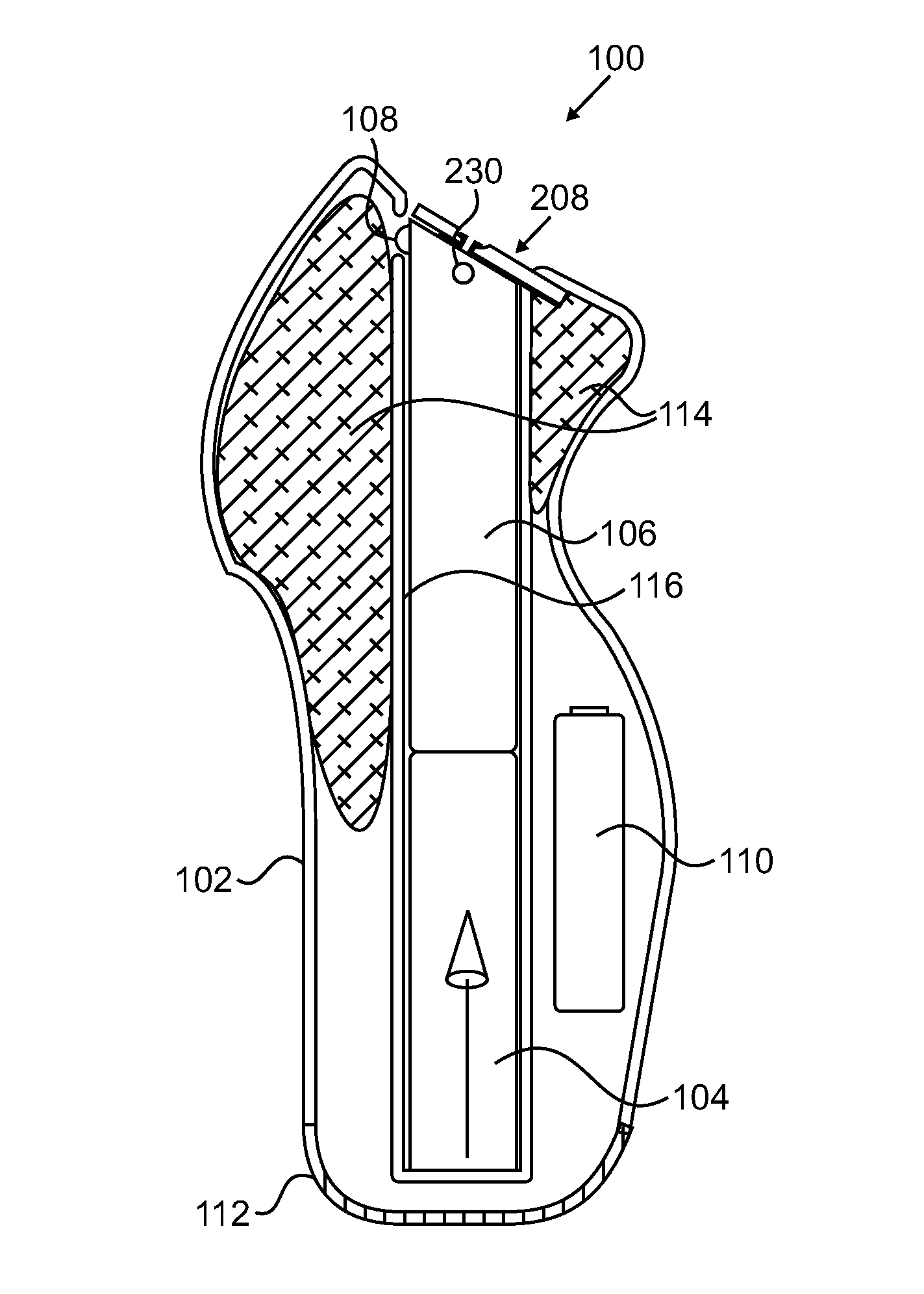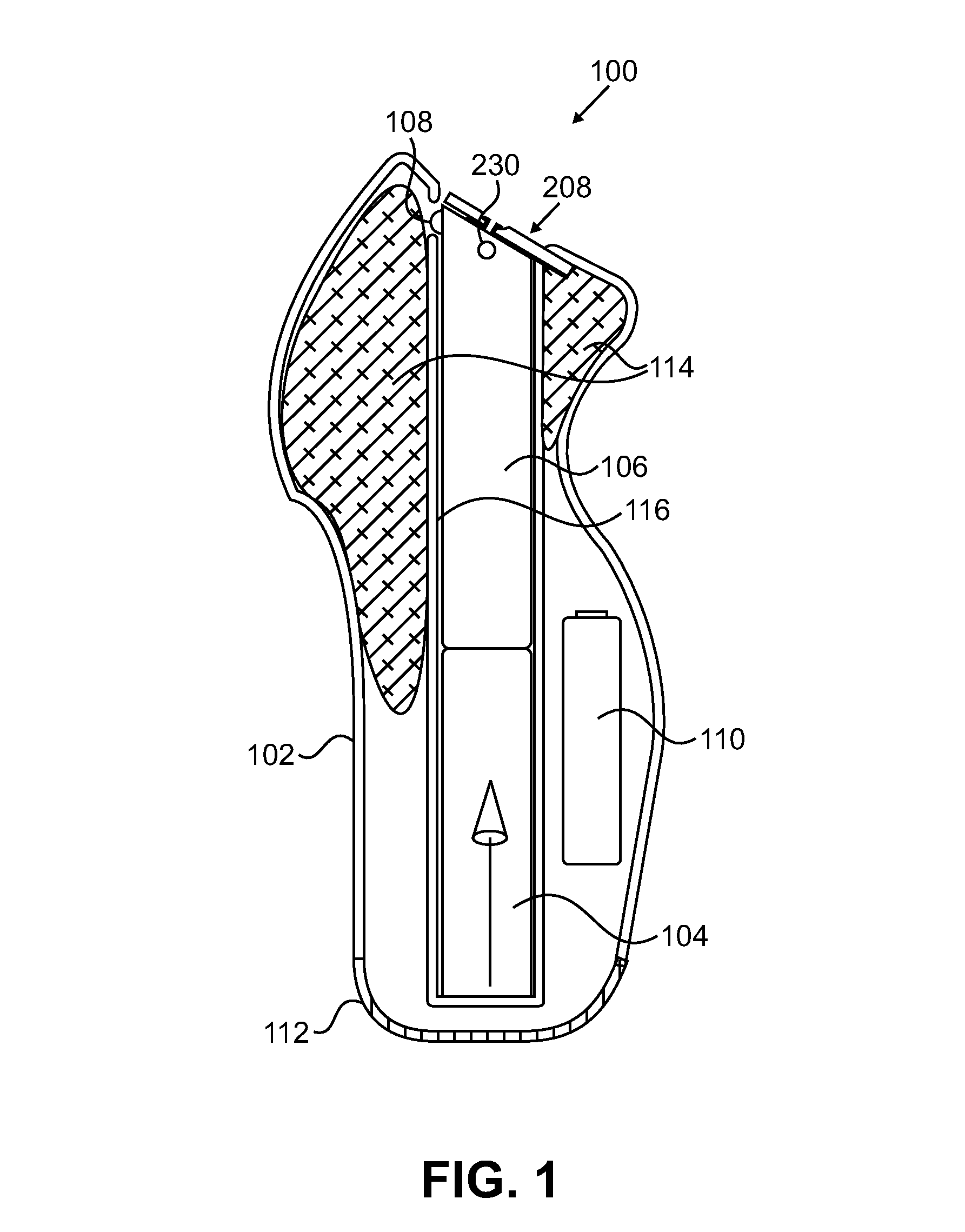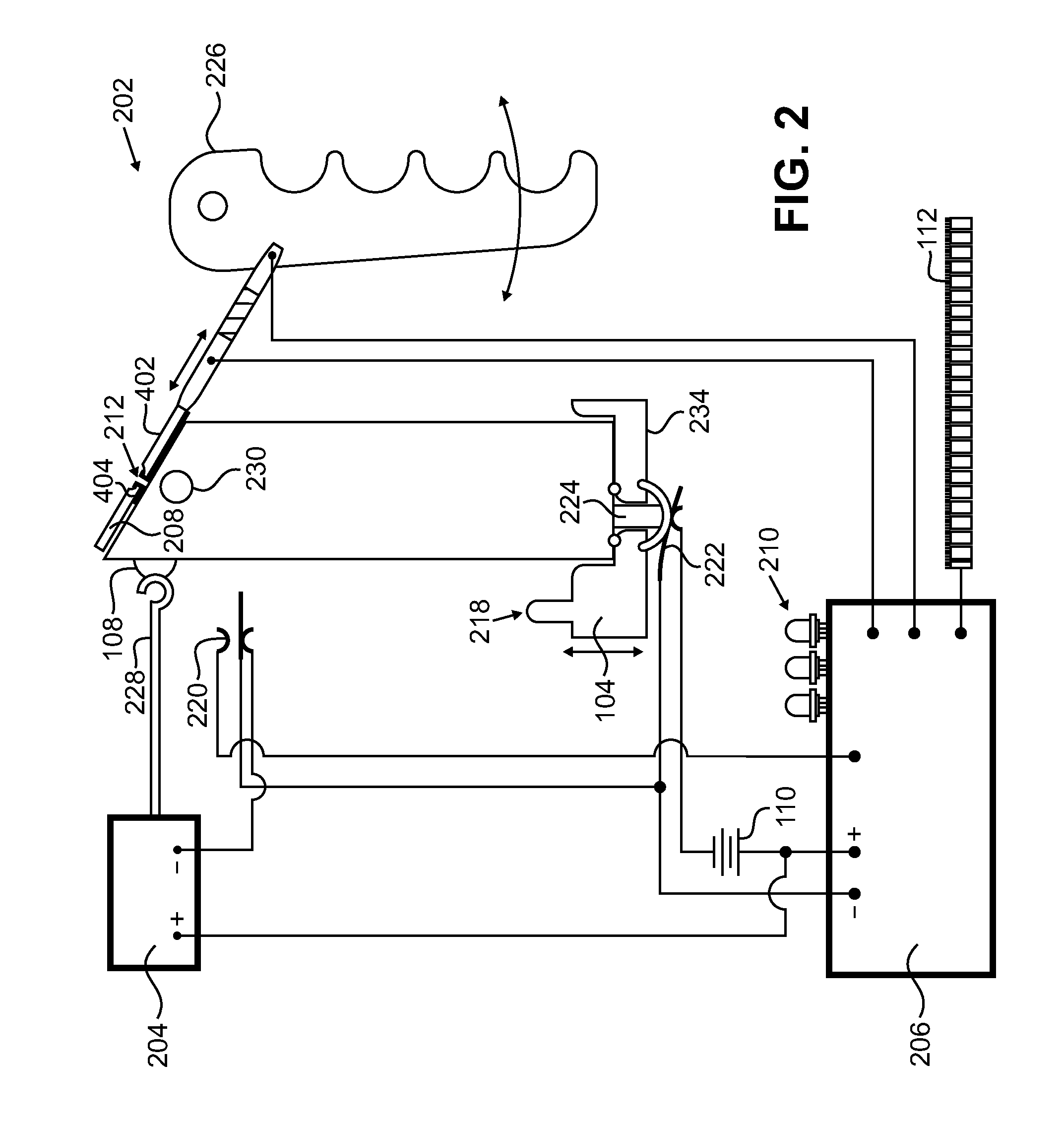VOC-less electrostatic fluid dispensing apparatus
a fluid dispensing apparatus and electrostatic technology, applied in the direction of corona discharge, separation process, instruments, etc., can solve the problems of inability to fully discharge, inability to re-charge, and inability to re-charge,
- Summary
- Abstract
- Description
- Claims
- Application Information
AI Technical Summary
Benefits of technology
Problems solved by technology
Method used
Image
Examples
case 720
[0094]Case 720 is a substantially cylindrical conductive case bounded on its bottommost end by case floor 726. Case 720 encases and supports the electrostatic atomizer components, namely, insulator 702, conductor 704, dedicated emitter electrodes 718, solenoid 722, armature 724, and insulating structure 734. Insulating structure 734 is coupled to case 720 and each emitter electrode 718 passes therethrough. Insulating structure 734 maintains each emitter electrode 718 in a fixed position with reference to its corresponding conductor exit aperture 712 and case exit aperture 740 and ensures proper alignment of emitter electrodes 718 therewith. Insulating structure 734 includes passages 736 to allow fluid 310 to pass therethrough for atomization between emitter electrodes 718 and conductor exit apertures 712 / case exit apertures 740.
[0095]As best depicted in FIG. 7B, case floor includes eight case orifices 728 arranged in a circular manner. While the depicted embodiment includes eight in...
PUM
 Login to View More
Login to View More Abstract
Description
Claims
Application Information
 Login to View More
Login to View More - R&D
- Intellectual Property
- Life Sciences
- Materials
- Tech Scout
- Unparalleled Data Quality
- Higher Quality Content
- 60% Fewer Hallucinations
Browse by: Latest US Patents, China's latest patents, Technical Efficacy Thesaurus, Application Domain, Technology Topic, Popular Technical Reports.
© 2025 PatSnap. All rights reserved.Legal|Privacy policy|Modern Slavery Act Transparency Statement|Sitemap|About US| Contact US: help@patsnap.com



